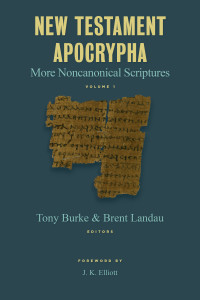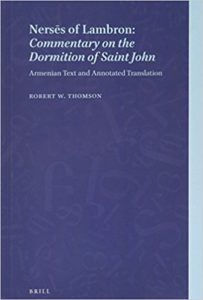2017 SBL Diary: Day Three
The third and (for me) final day of the annual meeting began with a breakfast with the NASSCAL executive. The annual meeting presents an opportunity for the executive to meet informally, with a loose gathering of whoever happens to be at SBL—which is usually most of us. I presented the group with an update of our various projects, including the e-Clavis (now at 64 texts completed and another 26 in progress), the Early Christian Apocrypha series (with Brandon Hawk’s Gospel of Pseudo-Matthew translation at the press and Lily Vuong’s Protevangelium of James near completion), the Studies in Christian Apocrypha series (with one title in progress, one in the proposal stage, and another two possibilities discussed), and the first NASSCAL conference (planned for the University of Virginia in September of October 2018). NASSCAL is now two-and-a-half years old and looking back, we have accomplished an awful lot in that short time.
 After breakfast Brent Landau and I headed over to the review session for our book New Testament Apocrypha: More Noncanonical Scriptures. It featured an all-star panel: David Brakke (Ohio State University), Philip Jenkins (Baylor University), Valentina Calzolari Bouvier (University of Geneva), Julia Snyder (Universität Regensburg), Judith Hartenstein (Universität Koblenz – Landau), Christoph Markschies (Humboldt-Universität zu Berlin – Humboldt University of Berlin), and for a student perspective, J. Gregory Given (Harvard University). Two of the respondents have already posted their comments online (Jenkins and Brakke). All of the reviewers were effusive in their compliments about the volume: Calzolari …
After breakfast Brent Landau and I headed over to the review session for our book New Testament Apocrypha: More Noncanonical Scriptures. It featured an all-star panel: David Brakke (Ohio State University), Philip Jenkins (Baylor University), Valentina Calzolari Bouvier (University of Geneva), Julia Snyder (Universität Regensburg), Judith Hartenstein (Universität Koblenz – Landau), Christoph Markschies (Humboldt-Universität zu Berlin – Humboldt University of Berlin), and for a student perspective, J. Gregory Given (Harvard University). Two of the respondents have already posted their comments online (Jenkins and Brakke). All of the reviewers were effusive in their compliments about the volume: Calzolari …

